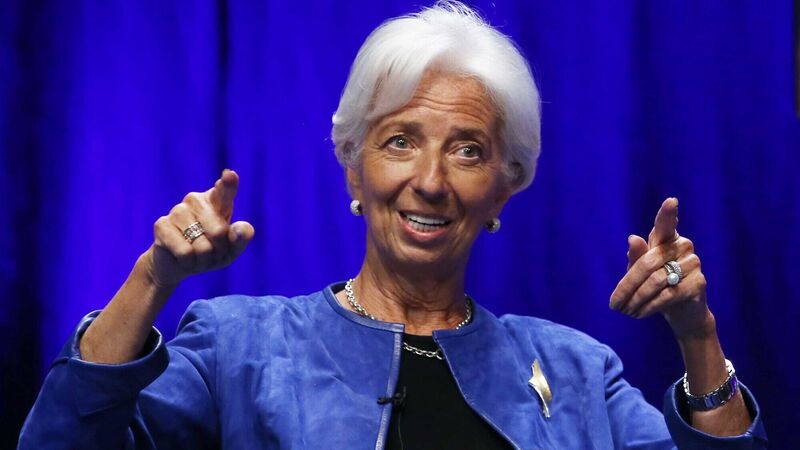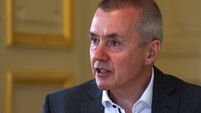Oliver Mangan: Interest rate hikes to remain a long way off

ECB chief Christine Lagarde is expected to strike a dovish tone at the bank's governing council meeting later this week.
Much of the market’s focus over the summer has been on when the US Federal Reserve (Fed) will make an announcement about beginning to taper — or scale back — asset purchases under its quantitative easing (QE) programme.
We are certainly getting closer to an announcement, but it looks as if the European Central Bank (ECB) will beat the Fed to the draw at its upcoming governing council meeting on Thursday.
A number of ECB board members have signalled, over the past week, that — given the improvement in economic and financing conditions in the eurozone — a reduction in the pace of asset purchases may be announced at the meeting.
In this regard, new economic projections for the meeting are likely to see upgrades to the ECB’s inflation and growth forecasts.
The tapering is expected to take effect in the fourth quarter, but it should be modest.
The pace of purchases will possibly be scaled back from €80bn to €60bn per month, the same amount as in the first quarter of the year.
At the press conference, ECB president Christine Lagarde will likely continue to strike a dovish tone, noting that the rowing back of purchases should be seen as a tweak to what is still very accommodative monetary policy.
Assuming the economic recovery proves sustained, a further reduction in purchases, possibly to €40bn per month, could be announced in December, with more tapering announcements likely in 2022.
The ECB is likely to be moving in sync with some other major central banks, as the Bank of England is due to conclude the latest batch of bond purchases under its QE programme around the end of the year, while the Fed is widely expected to start tapering over the winter.
As such, the near-term impact on currency markets should be limited, with the main foreign exchange pairs remaining within the well-defined trading ranges that have been in place for some time.
The signals on tapering from the ECB have helped the euro recover some ground lost over the summer, but overall, currency movements have been quite limited in recent months.
Similarly, eurozone bond yields have moved upwards again in the past week, reversing some of the fall seen in the summer.
However, there is no sign of the core bond markets moving out of their relatively narrow trading ranges of the past couple of years.
ECB rates are not expected to start to be raised until 2024, while in the US, Fed hikes are not expected until early 2023.
In the last cycle, concerns around the tapering of asset purchases by the Fed gave rise to the so-called ‘taper tantrum’ in 2013, when bond yields soared.
This was due to fears that reduced Fed asset purchases could cause a collapse in the US bond market, as well as some concerns that rate hikes might also follow; neither happened.
Markets would appear to have learnt their lesson, while central banks have improved their policy guidance.
Tapering can be easily absorbed by markets, which have an abundance of liquidity.
The bigger question is when will rates start to rise, and that still seems quite a long way off.
- Oliver Mangan is chief economist at AIB










